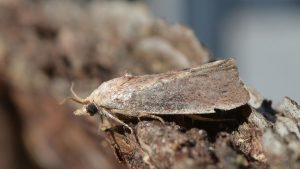Pesticides are a necessity in agriculture.
Prior to the use of pesticides in any form, farmers would often find their livelihood under siege by pests from every type, fungi, insect, microbial, and other plants. Yields could drop precipitously from any severe infestation.
Plants themselves also agree, with each type of plant producing dozens of pesticides on their own aimed at warding off attacks, whether by making themselves inedible or by actively killing the things that consume them.
The Development of Pesticides
In the early history of pesticide usage, once it was found that there were compounds that could be used to protect the plants and not harm them, there was very little control over their usage. The pesticides of the time were often highly caustic as well in one way or another.
The historical era since has seen a steady decline in pesticide toxicity as more scientific research has revealed better and better options to use. These are routinely ones that are gleaned from plants themselves. Of course, that doesn’t change the fact that misuse or heavy use of pesticides can be damaging, sometimes the pesticides derived from plants can be the most damaging of all.
Very recently, science and biotechnology has come into the forefront for pesticide development, working on specially designed synthetic pesticides aimed at affecting only very specific pests. Whether targeting specific biological pathways, genes, or cell types, these pesticides have been a huge boon for agriculture.
And many of them are so new, that they’ve only just now come into usage, such as RNA sprays that target particular RNA expression only found in a single species or family of insects.
But that doesn’t mean that nature has run out of things to teach us. Far from it, in fact. It’s just that these new discoveries require us to look a little deeper, at the parts of nature that have been fairly unexplored up to this point.
Moths To The Fungi
Two weeks ago on Bioscription, we discussed mycoviruses and their potential usage as a deterrent against fungi that attack crops (goo.gl/BKk6iR). Today, we are discussing mycoviruses in the exact opposite way.
Fungi don’t only prey on plants, there are also fungi that target insects as their prey. Virologists at the University of Hertfordshire and the Imperial College London were looking into a particular fungi known as Beauveria bassiana, which attacks the greater wax moth Galleria mellonella.
These moths can be found in most of the world, where they quickly spread into from their native Eurasian homeland. They are not a large pest in agriculture, in fact they have practically no presence therein. But beekeepers dislike them, as they are a prime apiculture pest that like to lay their larvae, known as waxworms, inside beehives and have them devour all the honeycomb.

Honeycomb Fears Them
So, not a threat to the bees directly, but certainly not helpful. However, the bigger topic involving the moth is that its waxworm children are model organisms found in toxicology, to determine LD50s and NOAEL levels, along with pathogenicity, where they are used to test the affects of microorganisms like bacteria and viruses.
Being such a model, the fungi that prey upon them seemed to be the perfect candidate to use as a test for the virologists. What they desired is to develop a fungi that can be used as a pesticide spray, while remaining completely ecologically friendly.
What About Them Darn Viruses?
Where do mycoviruses come into play, you might ask? Thus far, we’ve only discusses the fungi themselves and the insects they prey on. How would the viruses that prey on that fungi play a role, especially since our previous discussion on the topic showed how they inhibit the fungi’s ability to be virulent?
Well, long story short, that’s not always the case. The scientists found that within the mycoviruses involved in the B. bassiana genome, there was one group that had an interesting effect. An entirely new family of mycoviruses named by the researchers themselves under the title Polymycoviridae.
When comparing B. bassiana fungi that was infected with these viruses and those not infected, they found that the infected version appeared to exhibit a form of hypervirulence that increased their growth and harm upon the greater wax moth. The effect itself was, to note, mild, but still evident.
These results suggest that a combination of pest-destroying fungi and particular mycoviruses that induce hypervirulence in those fungi may be a possibility. Properly combined, they have the potential to act as a biocontrol agent, otherwise known as a pesticide.
Still A Ways To Go
Obviously, more research is needed and we’re a long way away from the development of such a pesticide, but these are the first steps toward an entirely new type of pesticide that’s never been seen before. Or, at least, not actively used by humans in agriculture.
But think of the possibilities. If they work as expected, we would have a laser-targeted pesticide aimed at a specific pest and which only has the capability to harm that pest. Similar to RNA sprays, but with variable and controllable virulence effects. To me, that sounds quite interesting indeed.
Photo CCs: Spraying Pesticides (Louisiana, United States) from Wikimedia Commons
Galleria mellonella – Greater Wax Moth from Wikimedia Commons





